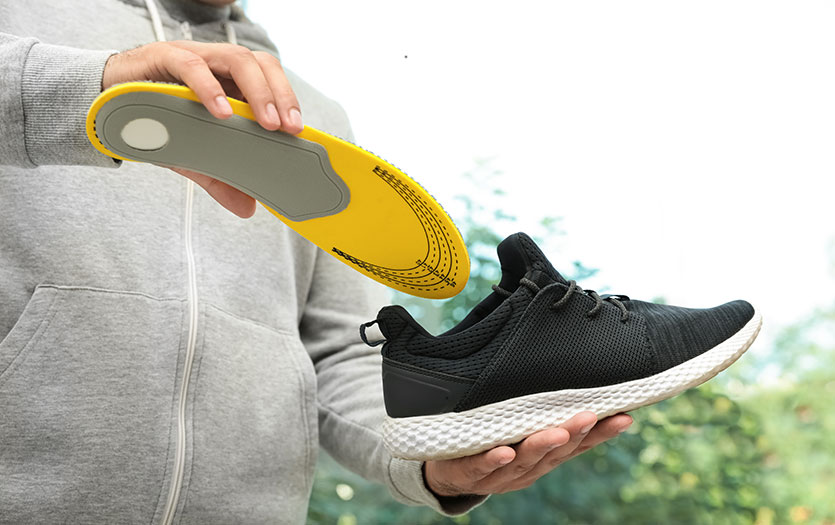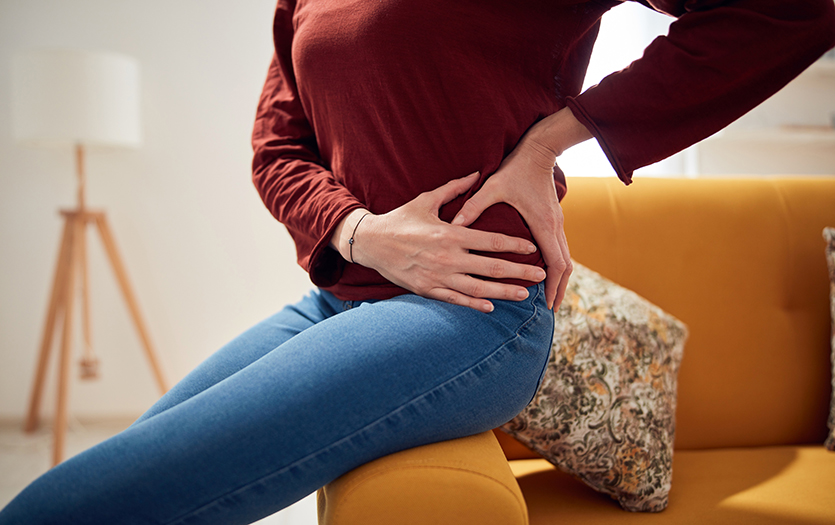
This post was written by Sean Collins, PT, Parkview Therapy Services.
A recent study in in the European Heart Journal, found that amongst 15,000 participants, individuals averaged 7.7 hours of sleep, 10.4 hours sitting, 3.1 hours standing, 1.5 hours performing light physical activity and 1.3 hours performing moderate-to-vigorous physical activity over the course of a typical week. Let’s zero in on the area with the highest reported number for a second. If we spend 40% of our days sitting, it can lead to stress in multiple muscle groups. For this post, we’re going to focus on the musculature that is associated with our hip joints, and how we can be kinder to them.
Why are we sitting so much?
With today’s tech-forward world, everyone is at risk of too much sitting, but particularly those of us who have desk jobs. This lifestyle, which can result in prolonged sitting, can lead to tight hips.
We also see hip discomfort in those with a history of a hip replacement or other hip surgery. If that’s the case for you, be sure to connect with your surgeon, family physician and/or physical therapist prior to working on hip mobility.
Why should we focus on hip mobility?
The hip is a ball-and-socket joint, meaning just like our shoulders, the hip can move in different directions, including flexion, extension and different types of rotation. Because of the variety of directions, there are multiple muscles that have attachment points to the hip joint. Increased sedentary time in the sitting position can leave our “hip flexors” in a prolonged shortened position, presenting as a tightness sensation in the anterior hip when standing, walking or when the hip is performing an extension movement. The muscles involved in hip flexion include rectus femoris, illiacus, psoas major and sartorius muscle.
Why work on hip mobility?
An easy way to address hip tightness or stiffness is to improve hip mobility or our ability to move the hip in different directions. These stretches will address hip flexors, or improve mobility in hip extension. If done consistently and correctly, improving hip mobility can be a low cost and efficient way to improve quality of life.
Key stretches
These stretches can be held for 15-30 seconds and can be done 3-4 times per session.
Modified Thompson stretch
- Laying on your back, let the hip you’d like to stretch rest over the side of the bed.
- Pull your other knee towards your chest. You should feel the stretch through front of resting leg.
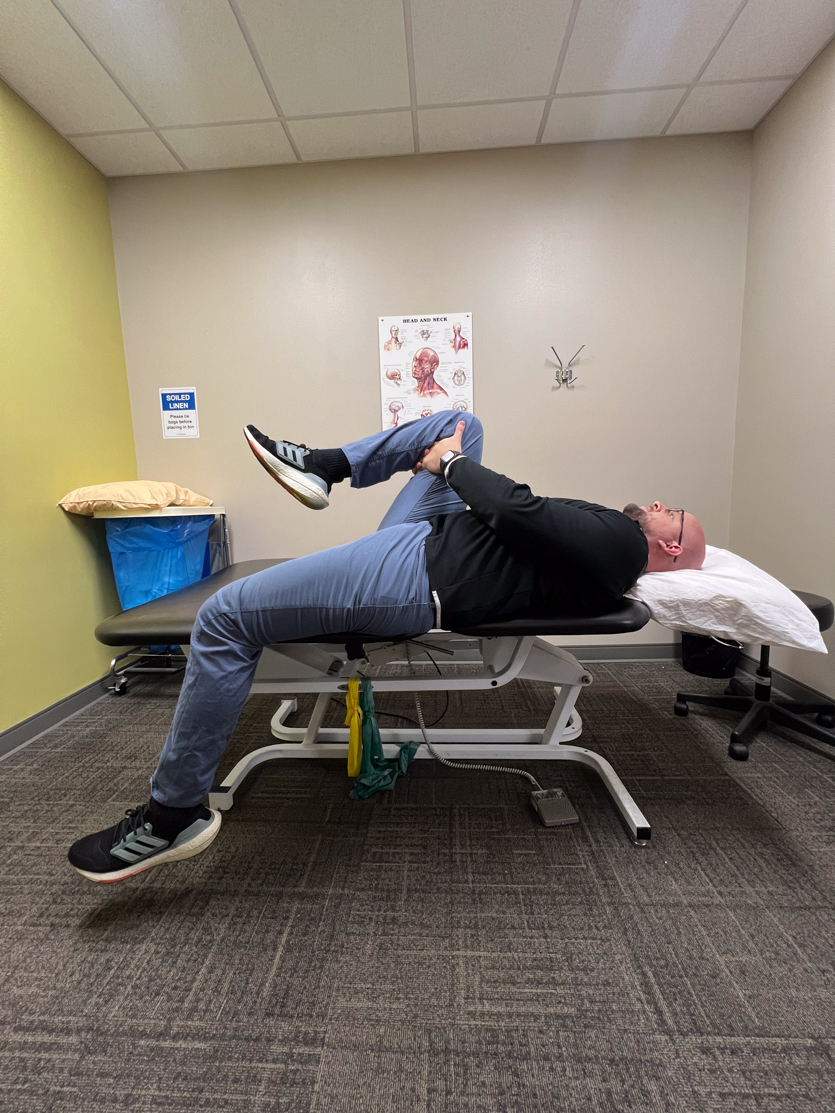
Kneeling hip flexor stretch
- In a kneeling position, shift your body and hips forward towards your front foot. You should feel a stretch through front of the hip on the back leg.
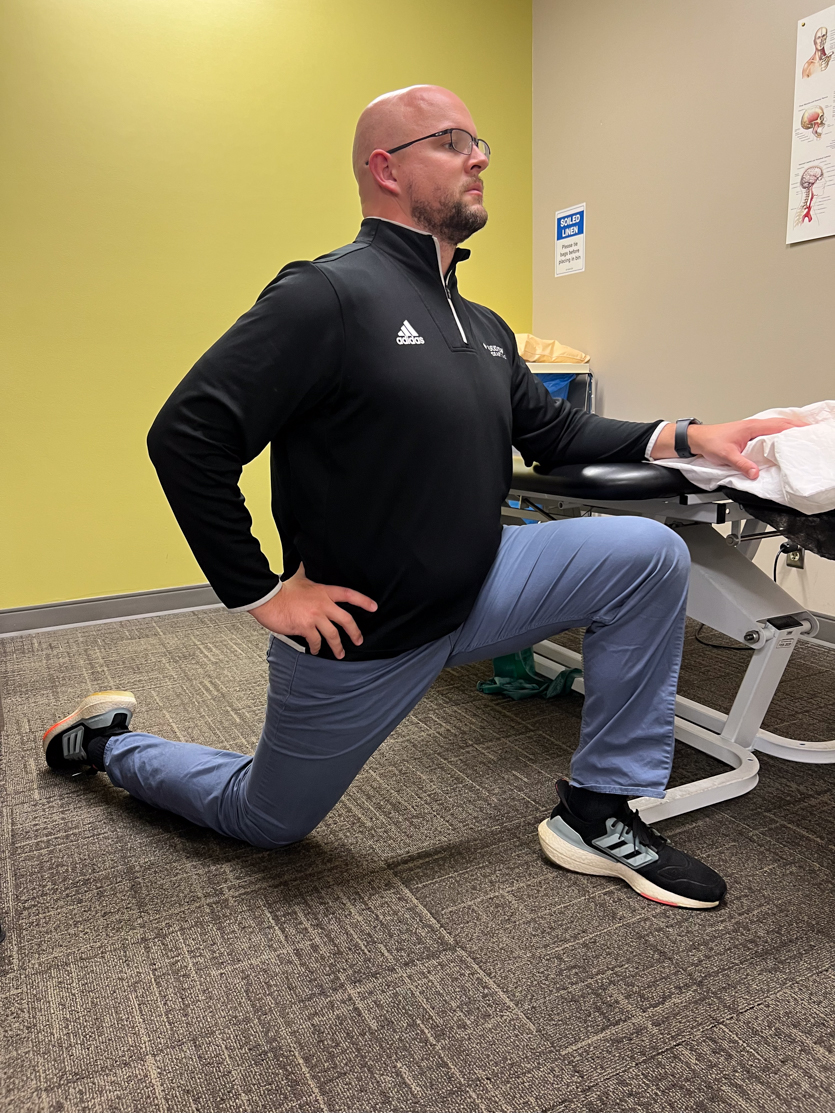
Standing hip stretch at step or box
- Placing your foot on a step or box, shift your weight forward and push your hips forward towards your front foot. You should feel the stretch through the front of the hip on the back leg.
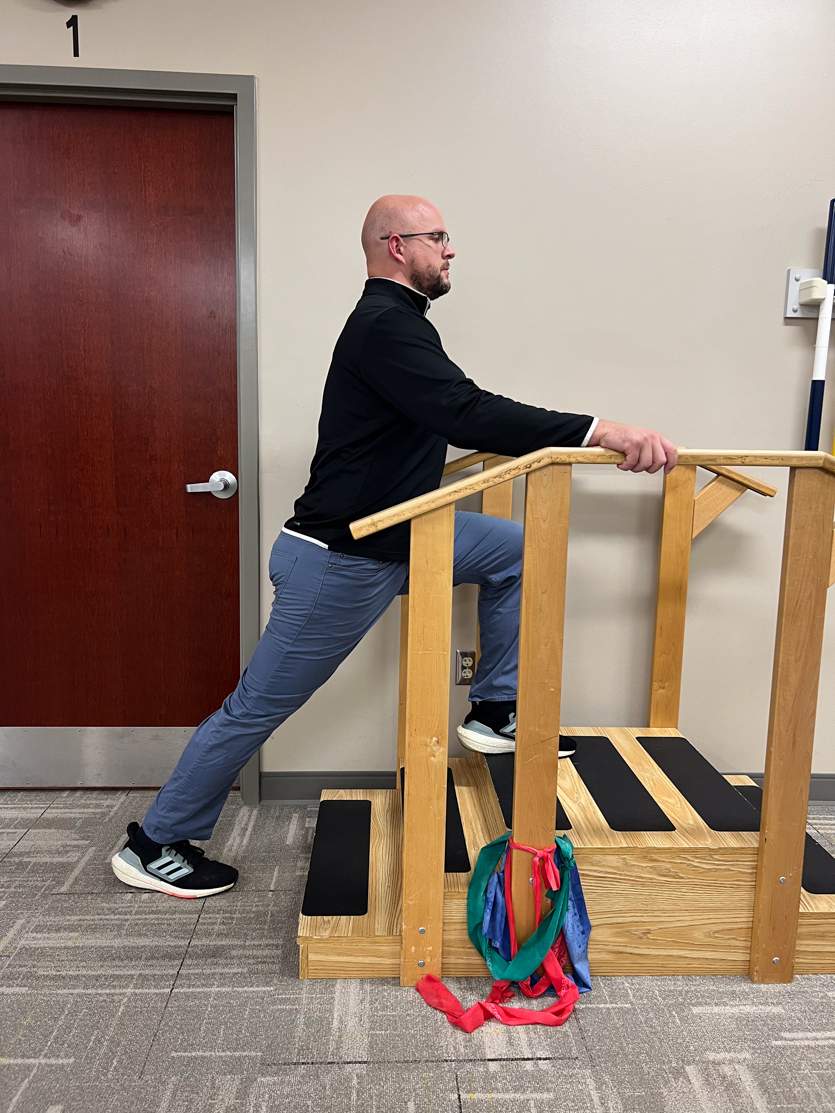

If you have questions or would like to learn more about Therapy Services at Parkview Health, visit us here.



